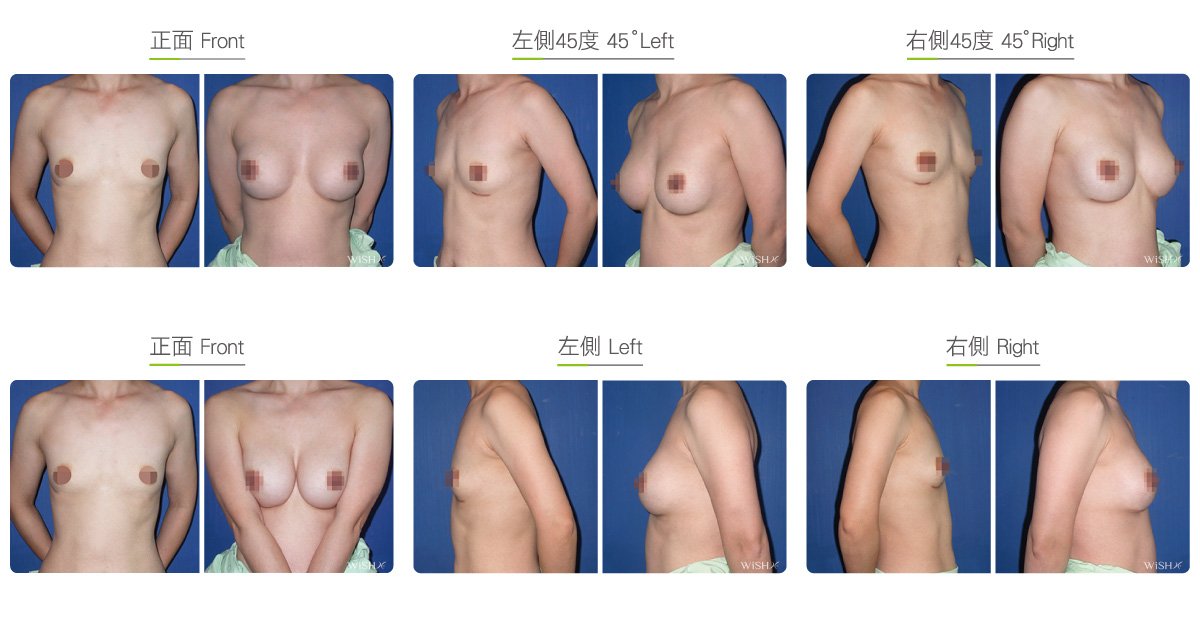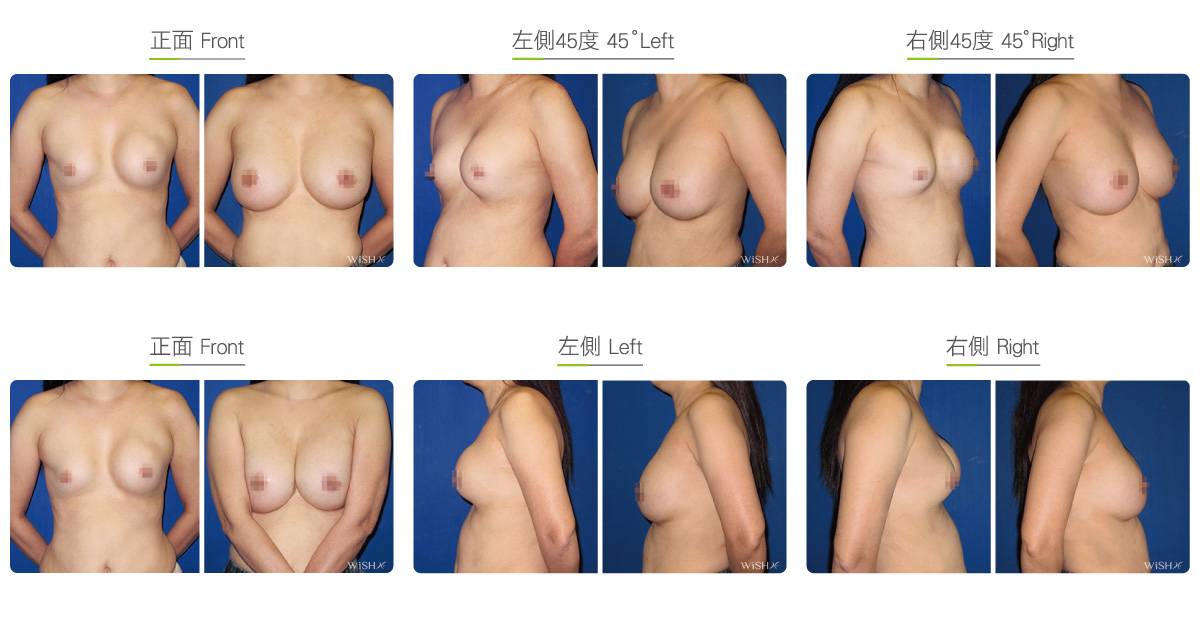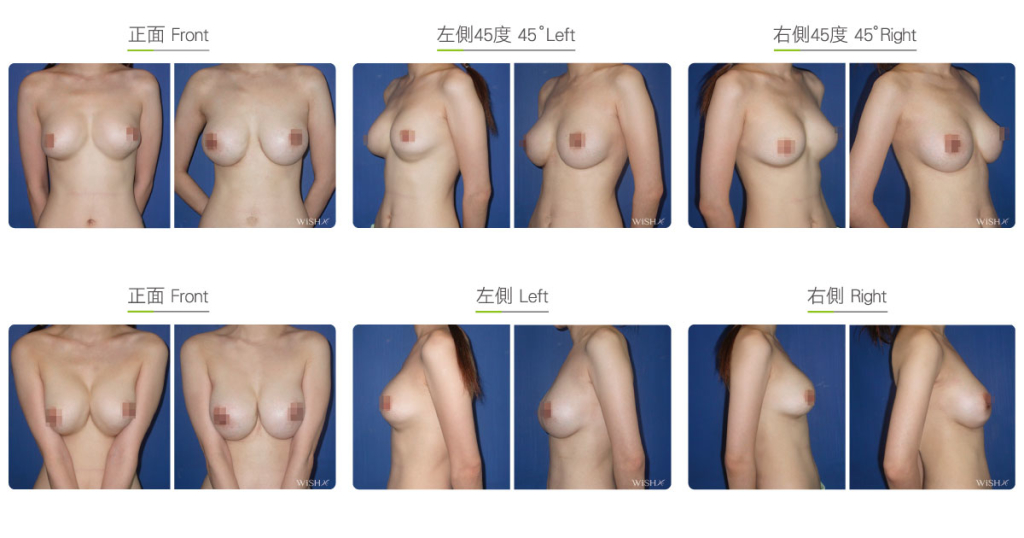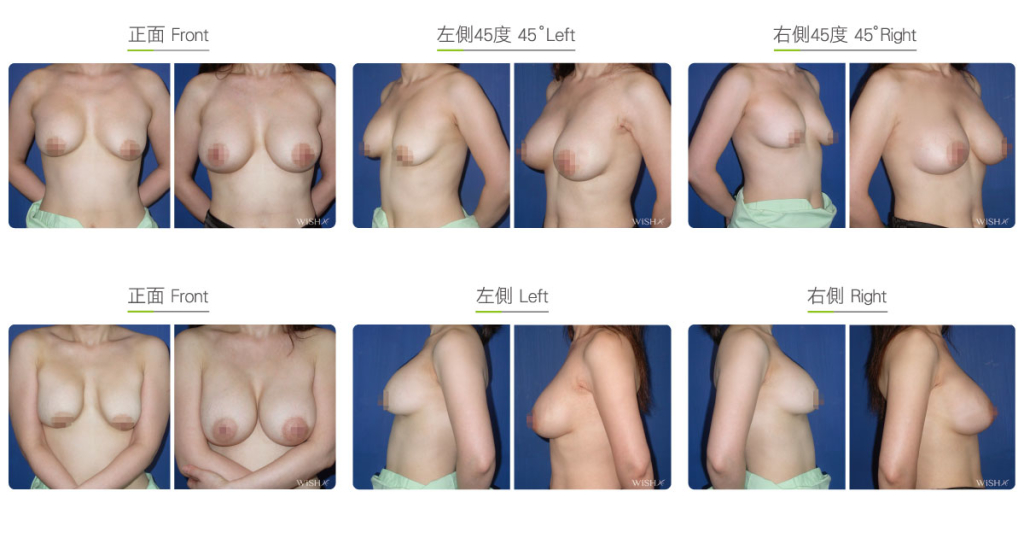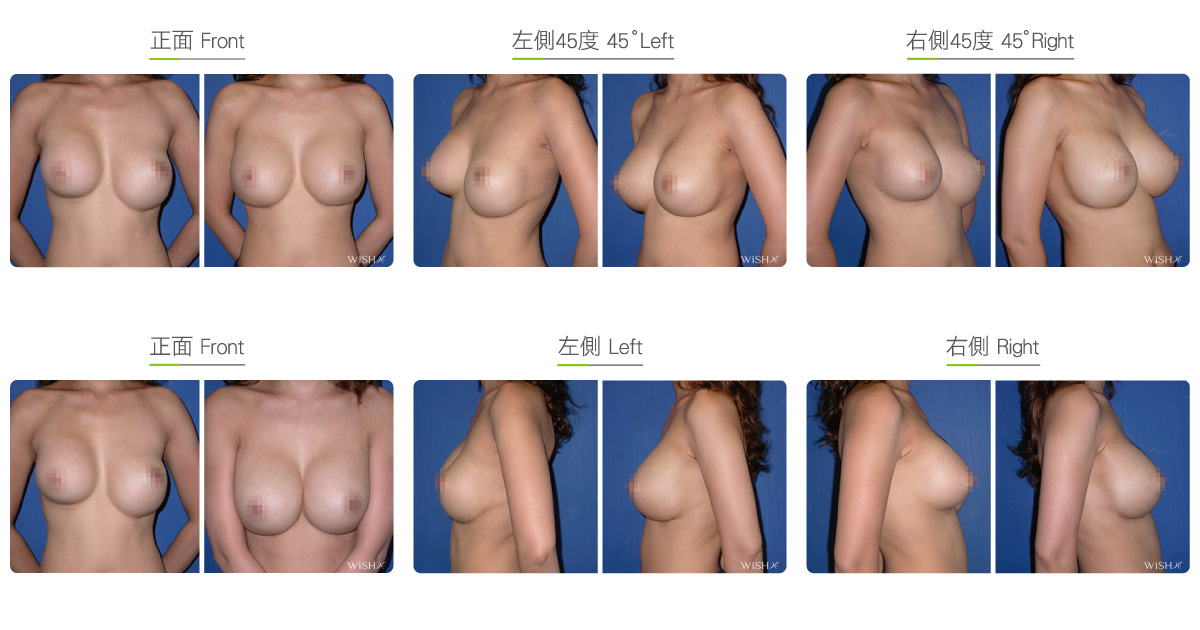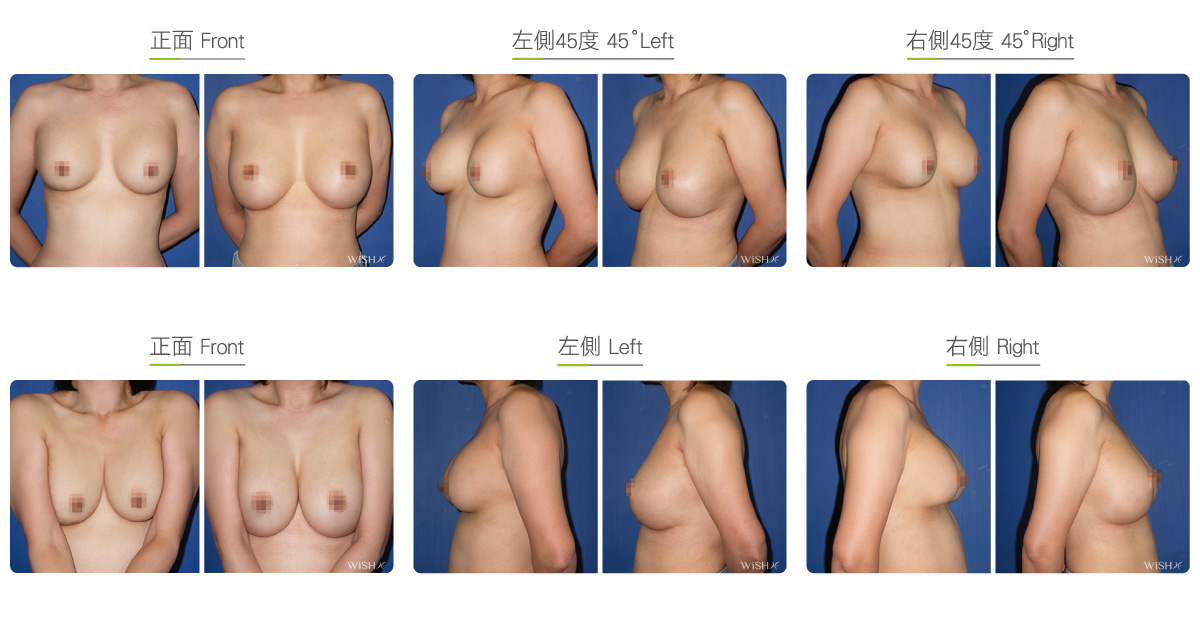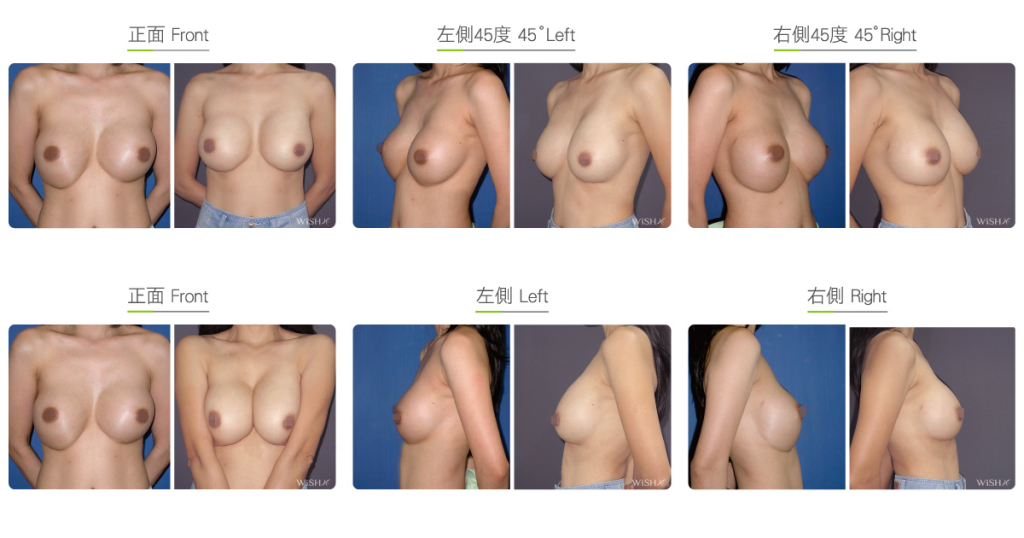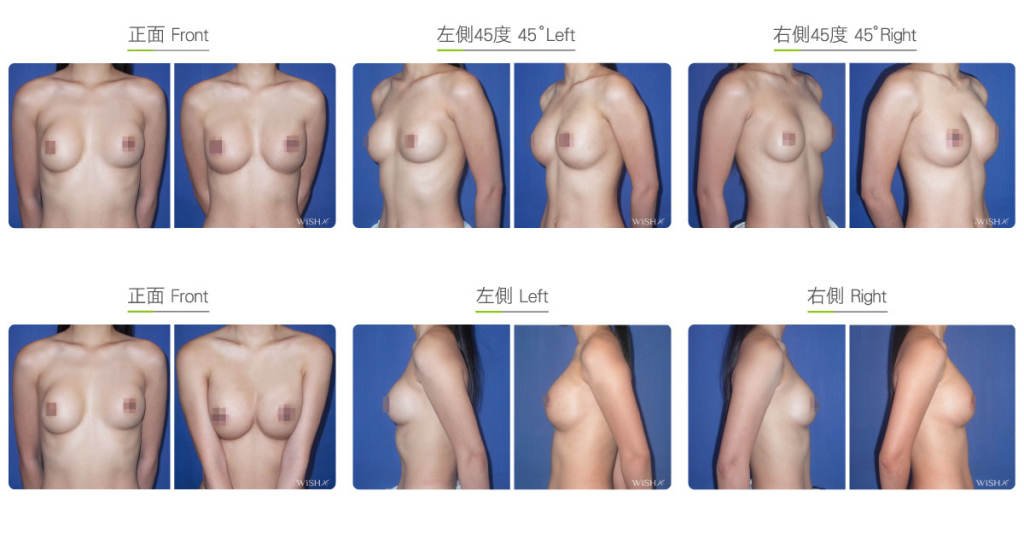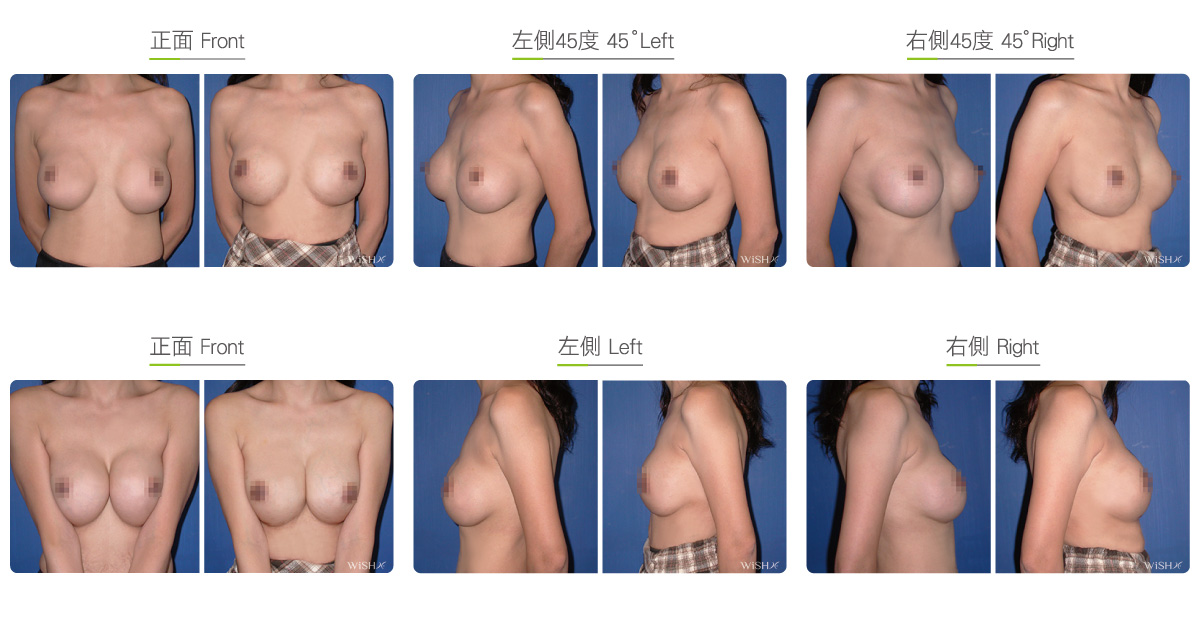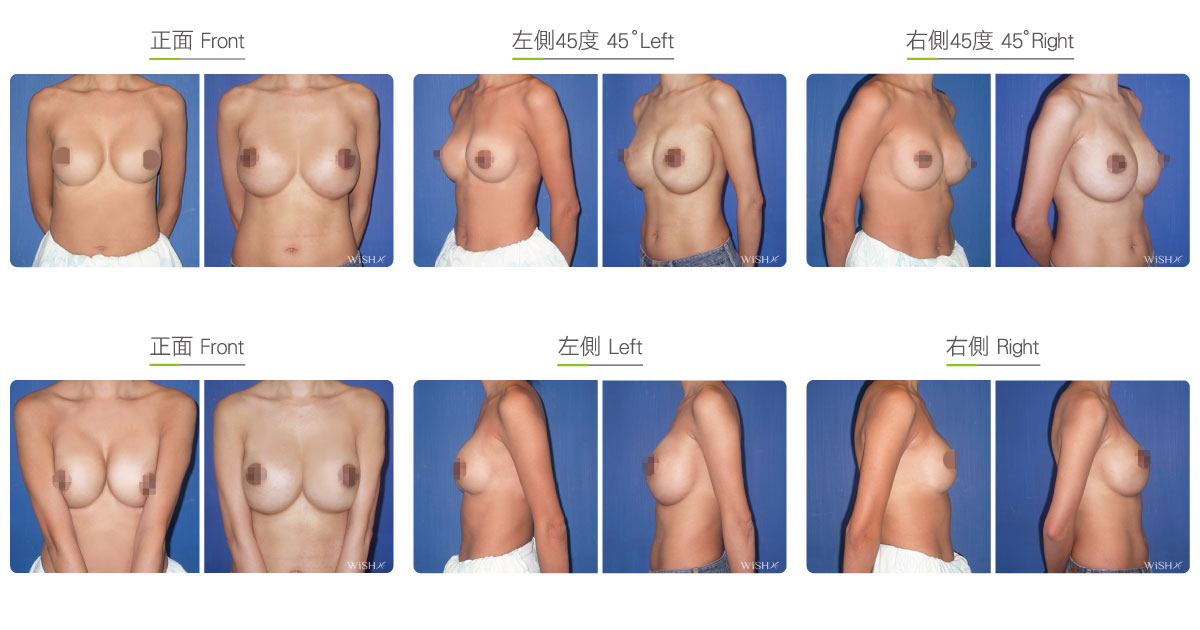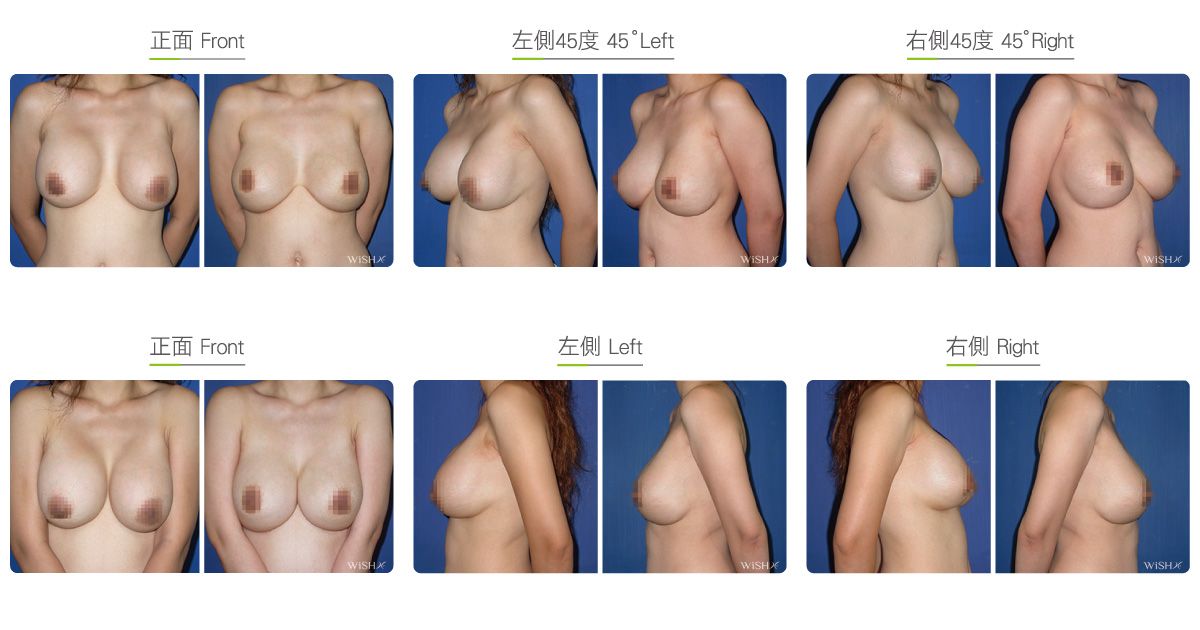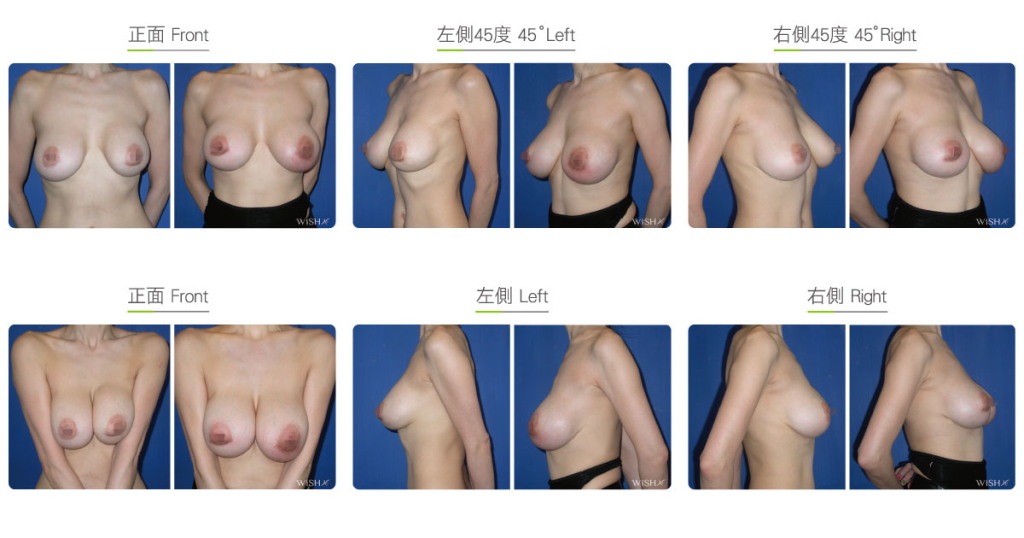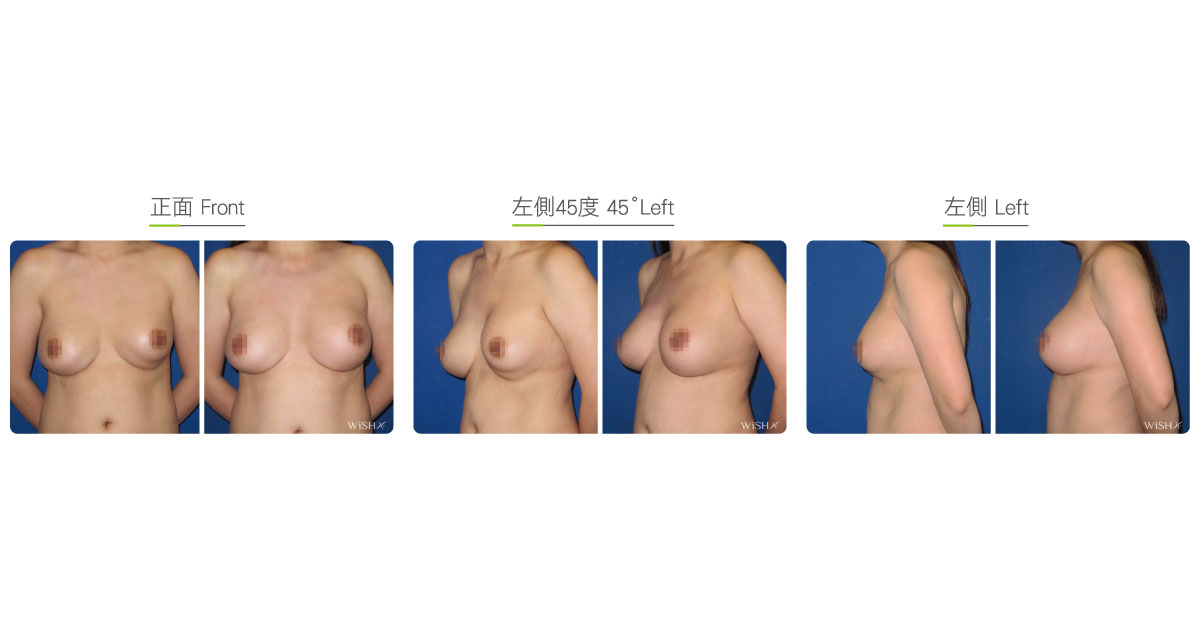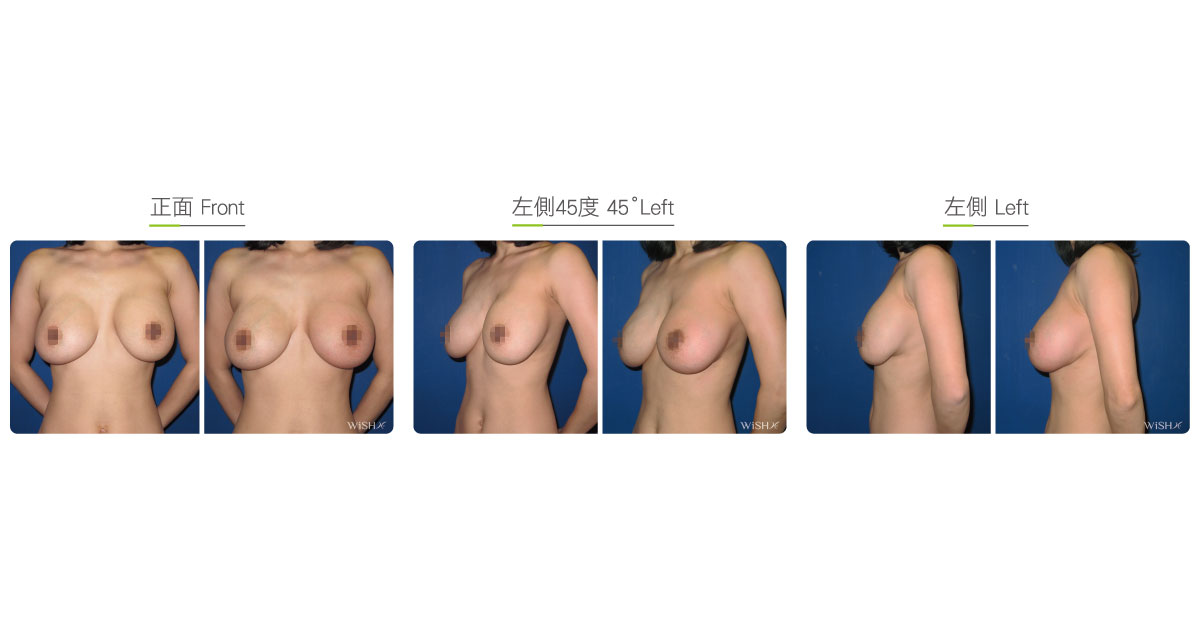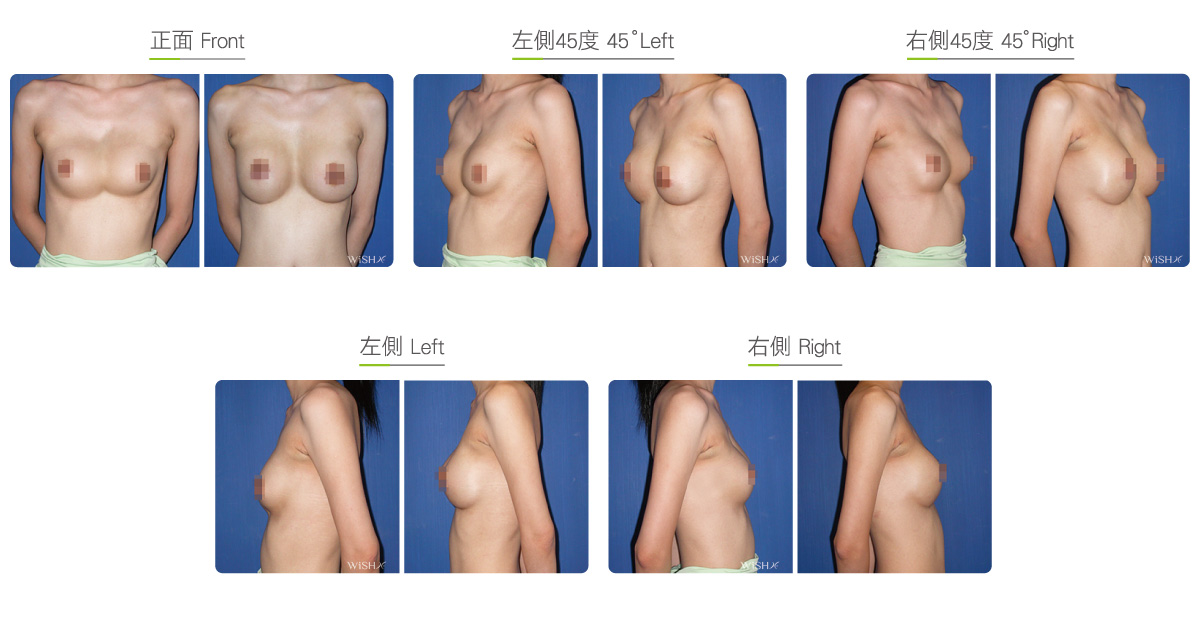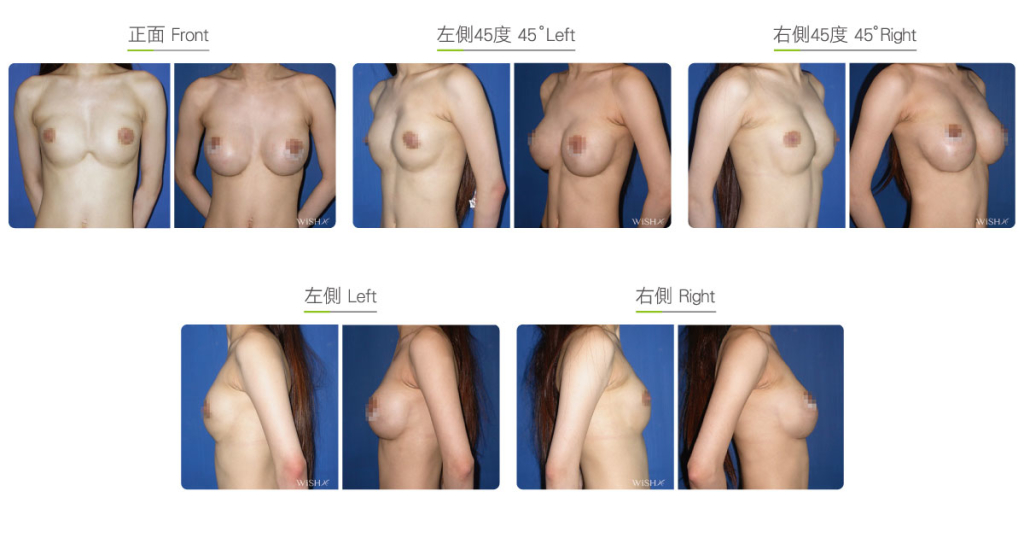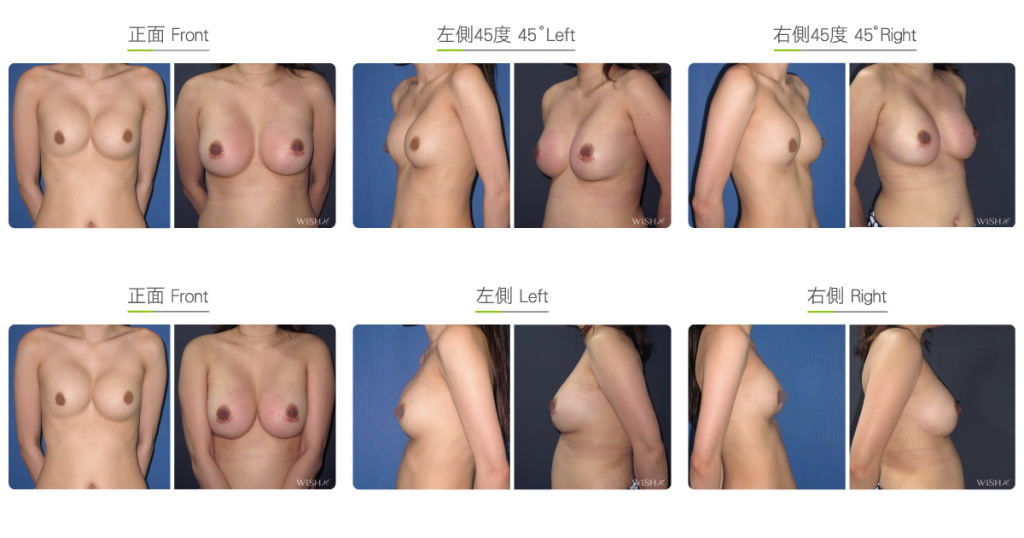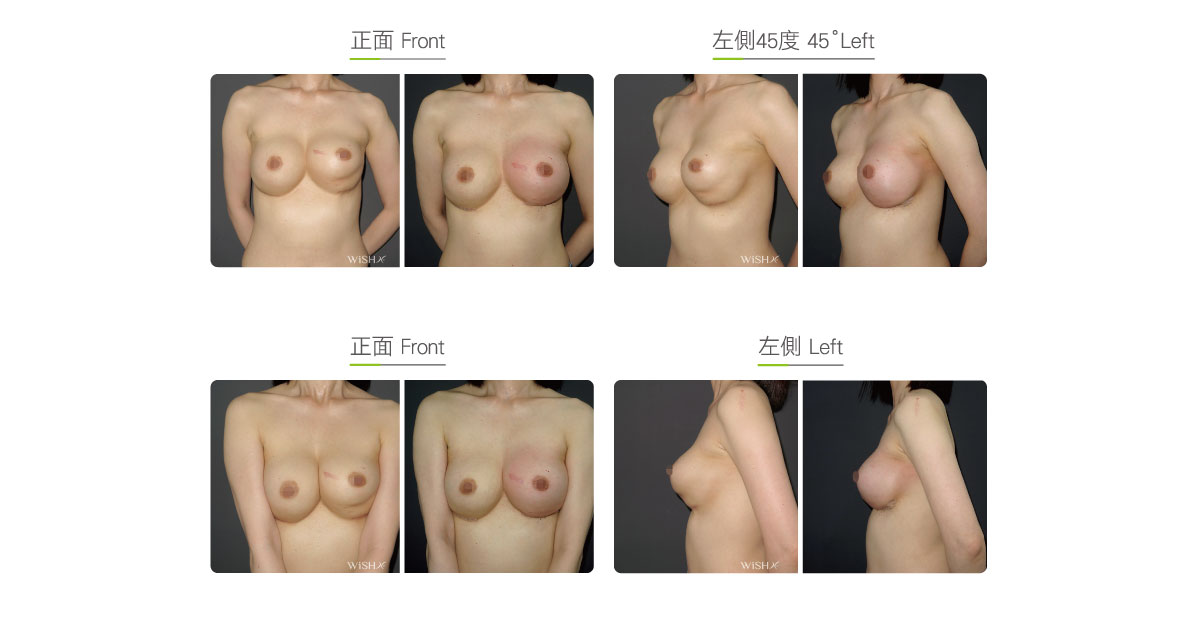Plane Conversion
This procedure abandons an original pocket with capsular contracture and creates a new space at the superior layer for new implants. It is a new augmentation mammoplasty and an advanced endoscopic revision surgery. Because this method does not require capsulotomy or capsulectomy, it not only reduces the risk of bleeding or infection but also eliminates the possibility of unexplained or refractory capsules. It is ideal for those who undergo repeated revisions due to refractory capsular contracture or those who have concerns about previous surgeries. Patients who had contracture due to inadequate postoperative massage after subpectoral implants could also use this method and have implants subfascially placed, thus reducing the burden and risk of postoperative care and increasing the success rate.
The surgery can be performed with a new or the original incision and needs to be assisted with an endoscope throughout the process. Currently, the most common method is to change implants from subpectoral to subfascial placement (for those who suffered capsular contracture after subpectoral implant surgery) or from subfascial to supracapsular/subglandular placement (for those who suffered capsular contracture after subfascial implant placement), also called supracapsular or neo-plane dissection. All these methods do not require capsulotomy or capsulectomy to avoid derivative risks such as bleeding and infection. The existing capsule would naturally fit with the space of removed implants, be gradually absorbed by the human body, and become thinner till it disappears.
This surgery creates new operation space and is free from the interference and influence of existing capsules, thus reducing many postoperative uncertainties or complications. According to Dr. Chuang’s statistics, this method presents with a much higher success rate than traditional surgery such as capsulectomy. However, the disadvantage is the complexity and longer duration of surgery. Surgeons need to be fully competent in operating an endoscope, and patients need to have adequate skin conditions to fully benefit from this procedure. Currently, Dr. Chuang utilizes comprehensive endoscopy through a transaxillary incision for all implant removal and conversion procedures, effectively reducing new scarring that could be caused by traditional periareolar incision.
Surgical conditions
Duration
- Type of anesthesia: General anesthesia
- Type of incision: Previous incision or transaxillary, periareolar, or inframammary incision
- Recovery: Within 7–10 days
- Removal of stitches: 10–14 days
General instructions
No food and water on the day of surgery
- A temporary indwelling tube is required to drain blood.
- Tasks and exercises that require excessive arm strength should be avoided for 1 month postoperatively.
- Smoking and consumption of collagen or vitamin C should be avoided for 3 months postoperatively to prevent the formation of capsules.
- Underwired or push-up bras should not be worn for 3 months postoperatively
- Breast massage should be performed for at least 6 months postoperatively
Ideal candidates
- Those who are undergoing revision augmentation with original breast size of at least B cup
- Those with moderate to severe capsular contracture due to subpectoral implants
- Those who have undergone repeated augmentation surgeries for unknown reasons
- Those with refractory capsules
- Those with capsular contracture due to inadequate postoperative massage after previous subpectoral implants
- Those who would like to undergo painless subfascial implant placement in secondary surgery
Possible complications
- Skin loosening
- Chronic edema (seroma)
- Hematoma
- Axillary scar adhesion
- Recurrent capsule
- Hyposensitive nipples (temporary or chronic)
- Implant leakage or rupture
Surgical advantages
-
Avoids any capsulotomy or capsulectomy and prevents postoperative risks such as bleeding or infection risk.
-
Minimal postoperative pain; breast massage may be started earlier.
-
Changing to subfascial placement allows easier care.
-
Effectively prevents refractory or recurrent capsular contracture.
-
Implant size may be freely increased or decreased.
-
New pockets can effectively solve many tricky complications such as symmastia or low implant position.
Surgical drawbacks
-
More invasive to reach the deep or superficial layers of the breast; postoperative recovery is relatively long.
-
Longer surgery; more likely to incur scar adhesion at the original incision site.
-
More evident postoperative swelling; an indwelling tube is required to drain blood.
-
Chronic effect on nipples and breast sensitivity.
-
Not ideal for those with thin breast skin or tissue.

